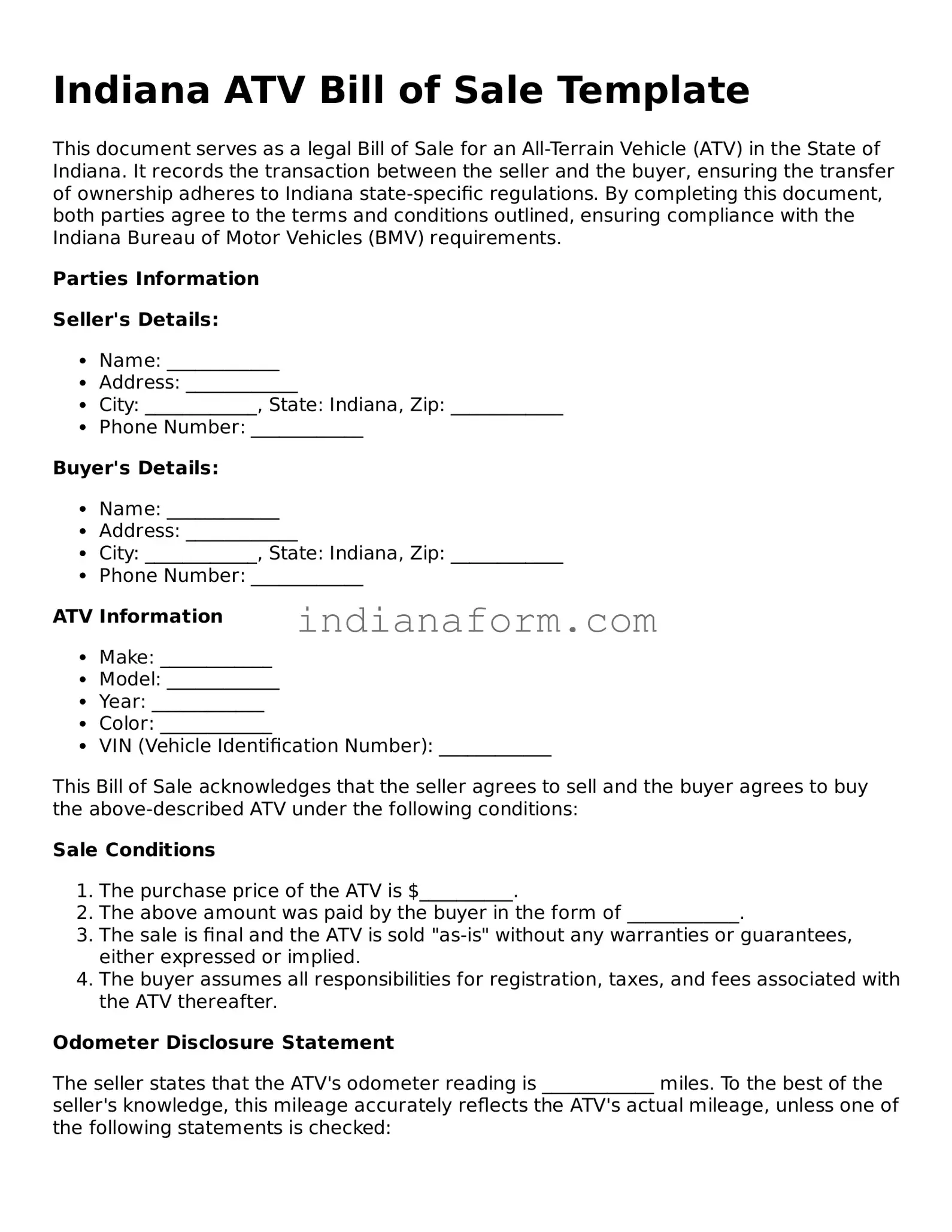What is an ATV Bill of Sale form?
An ATV Bill of Sale form is a legal document that records the transfer of ownership of an all-terrain vehicle (ATV) from a seller to a buyer. It serves as proof of the transaction and typically includes details such as the make, model, year, Vehicle Identification Number (VIN), the names and addresses of the buyer and seller, the sale date, and the purchase price.
Do I need an ATV Bill of Sale form in Indiana?
Yes, in Indiana, it is strongly recommended to complete an ATV Bill of Sale form when buying or selling an ATV. Although not mandatory by law for private sales, this document provides legal proof of ownership transfer and can be crucial for registration, insurance, and tax purposes. It also protects both the buyer and the seller in case of future disputes.
What information is required on an Indiana ATV Bill of Sale form?
An Indiana ATV Bill of Sale form should include the full names and addresses of both the buyer and the seller, a description of the ATV (including make, model, year, and VIN), the sale date, the purchase price, and signatures from both parties involved in the transaction. It's also recommended to notarize the document, though it's not a legal requirement in Indiana.
Can I create my own ATV Bill of Sale form?
Yes, you can create your own ATV Bill of Sale form as long as it includes all the necessary information mentioned above. However, ensure that the document is clear, detailed, and legible to serve as a valid record of the sale. Pre-made templates are also available and can be a more convenient option.
Is it necessary to notarize the ATV Bill of Sale in Indiana?
Notarization of an ATV Bill of Sale in Indiana is not a legal requirement. However, having the document notarized adds an extra layer of authenticity and can help protect both parties if there's a legal dispute in the future. It's a recommended, but not mandatory, step.
What should I do after completing an ATV Bill of Sale form?
After completing the ATV Bill of Sale form, both the buyer and seller should keep a copy for their records. The buyer will need the document for registration, insurance, and potentially for tax purposes. It's also advisable to check with local authorities if there are any additional steps or documentation required for a complete transfer of ownership.
How does an ATV Bill of Sale protect me?
An ATV Bill of Sale protects the buyer by serving as proof of purchase and establishing their legal ownership of the ATV. For the seller, it confirms that they have legally transferred the ownership rights of the ATV to the buyer and can protect them from future liabilities related to the vehicle. It serves as a crucial document in resolving disputes over ownership or sale terms.
